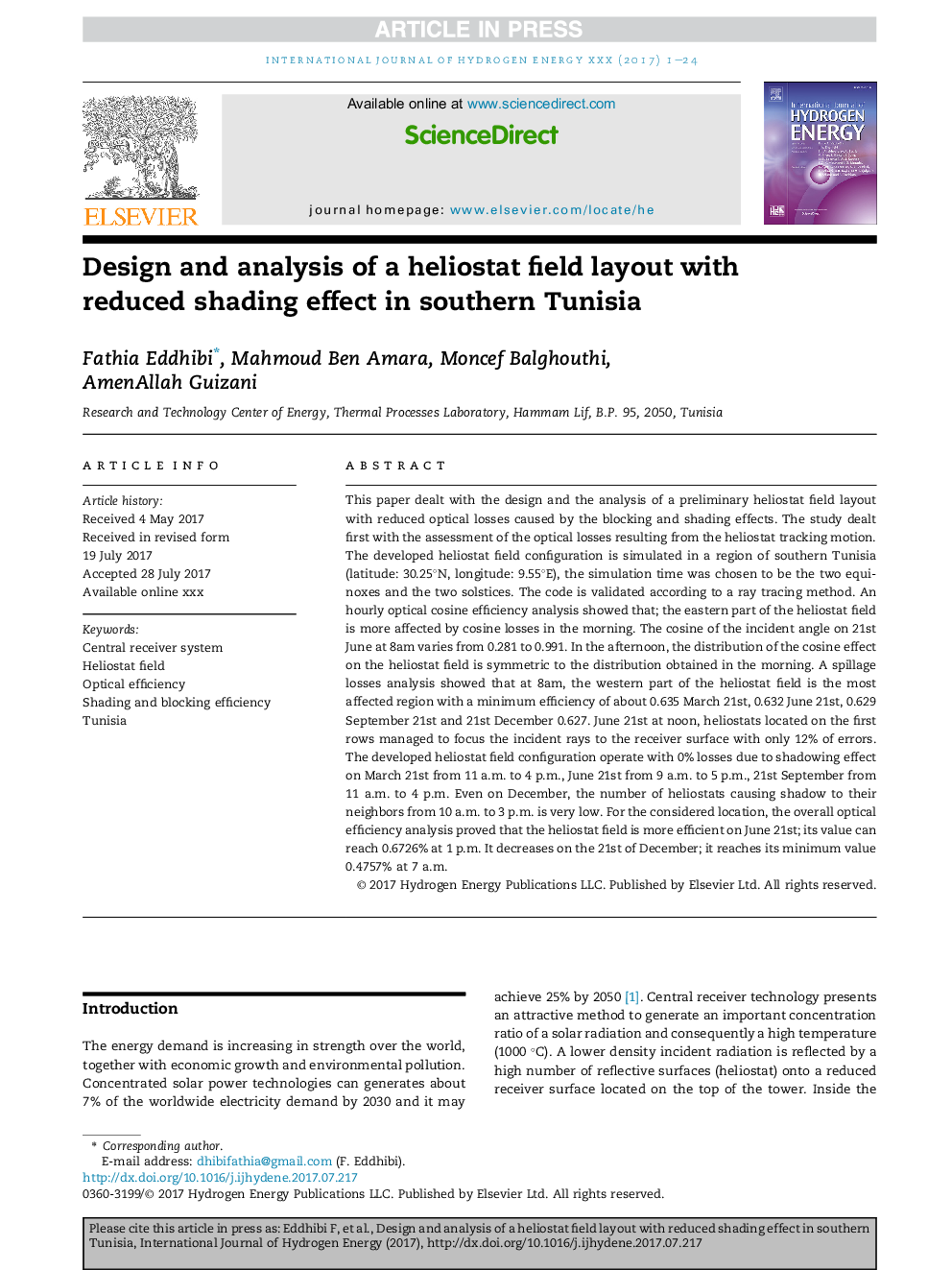| Article ID | Journal | Published Year | Pages | File Type |
|---|---|---|---|---|
| 7709333 | International Journal of Hydrogen Energy | 2017 | 24 Pages |
Abstract
This paper dealt with the design and the analysis of a preliminary heliostat field layout with reduced optical losses caused by the blocking and shading effects. The study dealt first with the assessment of the optical losses resulting from the heliostat tracking motion. The developed heliostat field configuration is simulated in a region of southern Tunisia (latitude: 30.25°N, longitude: 9.55°E), the simulation time was chosen to be the two equinoxes and the two solstices. The code is validated according to a ray tracing method. An hourly optical cosine efficiency analysis showed that; the eastern part of the heliostat field is more affected by cosine losses in the morning. The cosine of the incident angle on 21st June at 8am varies from 0.281 to 0.991. In the afternoon, the distribution of the cosine effect on the heliostat field is symmetric to the distribution obtained in the morning. A spillage losses analysis showed that at 8am, the western part of the heliostat field is the most affected region with a minimum efficiency of about 0.635 March 21st, 0.632 June 21st, 0.629 September 21st and 21st December 0.627. June 21st at noon, heliostats located on the first rows managed to focus the incident rays to the receiver surface with only 12% of errors. The developed heliostat field configuration operate with 0% losses due to shadowing effect on March 21st from 11 a.m. to 4 p.m., June 21st from 9 a.m. to 5 p.m., 21st September from 11 a.m. to 4 p.m. Even on December, the number of heliostats causing shadow to their neighbors from 10 a.m. to 3 p.m. is very low. For the considered location, the overall optical efficiency analysis proved that the heliostat field is more efficient on June 21st; its value can reach 0.6726% at 1 p.m. It decreases on the 21st of December; it reaches its minimum value 0.4757% at 7 a.m.
Related Topics
Physical Sciences and Engineering
Chemistry
Electrochemistry
Authors
Fathia Eddhibi, Mahmoud Ben Amara, Moncef Balghouthi, AmenAllah Guizani,
